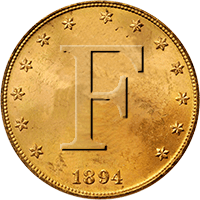Hello Forum friends,
Most of the Californians know I still use the older detectors for special hunting conditions, Compass has always been one of my favorite detectors for cleaning up the mess from iron laced sites other hunters leave behind. In this case, The Explorers including my own had pounded this site until not even a whisper could be heard.
After the Explorers "including my own" cleaned up most of the easy targets, What was left were the coins and relics buried under a layer of square nails. It took the Compass Coin Scanner Pro II, the Compass 77B and Compass 77 Auto Legend to recover cobs of finds many considered cleaned out.
My friends were amazed with the finds I was easily pulling out, Even though each Compass detector was pulling out more than it's share of square nails, every once in a while a seated coin or nice relic would surface making the extra effort worth while.
After a couple of days with the Explorer, switched to the Coin Scanner Pro II and started to pull out more relics and then a seated dime, Continued on pulling out more relics and old coins. When the site appeared to have exhausted all of its targets with using the Coin Scanner Pro, I then switched to the Compass 77B and Legend 100 kHz detectors and started to pull out more coins and relics including an Eagle sword waist plate, US Regulation.
Pictured below are recent finds the past couple of weeks, Everyone did well at this old site but my take surpassed all the others using the Explorer. The only coin in the picture recovered by my Explorer is the Walking Liberty half, The Compass detectors recovered the rest,
1851-1864 Eagle sword waist plate, US Regulation,
1861 seated dime,
1864S seated quarter, only 20,000 minted. Very rare.
1870 seated half dollar,
1871 seated dime,
1871 seated dime, another one both with no mint mark,
2 shield nickels,
2 Indian pennies "not pictured.
Thanks for looking,
Paul (Ca)
Most of the Californians know I still use the older detectors for special hunting conditions, Compass has always been one of my favorite detectors for cleaning up the mess from iron laced sites other hunters leave behind. In this case, The Explorers including my own had pounded this site until not even a whisper could be heard.
After the Explorers "including my own" cleaned up most of the easy targets, What was left were the coins and relics buried under a layer of square nails. It took the Compass Coin Scanner Pro II, the Compass 77B and Compass 77 Auto Legend to recover cobs of finds many considered cleaned out.
My friends were amazed with the finds I was easily pulling out, Even though each Compass detector was pulling out more than it's share of square nails, every once in a while a seated coin or nice relic would surface making the extra effort worth while.
After a couple of days with the Explorer, switched to the Coin Scanner Pro II and started to pull out more relics and then a seated dime, Continued on pulling out more relics and old coins. When the site appeared to have exhausted all of its targets with using the Coin Scanner Pro, I then switched to the Compass 77B and Legend 100 kHz detectors and started to pull out more coins and relics including an Eagle sword waist plate, US Regulation.
Pictured below are recent finds the past couple of weeks, Everyone did well at this old site but my take surpassed all the others using the Explorer. The only coin in the picture recovered by my Explorer is the Walking Liberty half, The Compass detectors recovered the rest,
1851-1864 Eagle sword waist plate, US Regulation,
1861 seated dime,
1864S seated quarter, only 20,000 minted. Very rare.
1870 seated half dollar,
1871 seated dime,
1871 seated dime, another one both with no mint mark,
2 shield nickels,
2 Indian pennies "not pictured.
Thanks for looking,
Paul (Ca)
